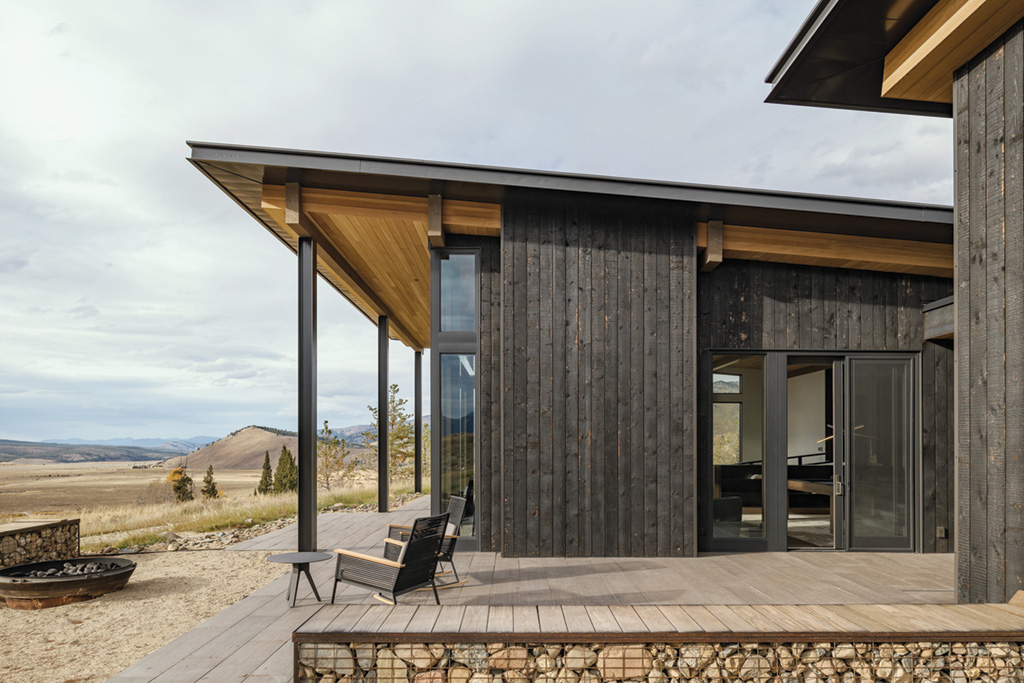This past year has seen an increased focus on all things home and family, especially as we all find ourselves spending more time in our homes. And with all that time inside, homeowners seem to be feeling inspired to find solutions to their most used living spaces and are looking for innovative ways to bring more creativity, comfort and ease to their home design and function. Here’s a roundup of some of the trends on the horizon for the coming year—everything from basic building and design trends to smart and sustainable new technologies to help us feel healthier and more energized in the spaces we call home.
Outbuildings
In June 2020, the American Institute of Architects released their “Annual Home Design Trends Survey” and reported that while emphasis on outdoor living spaces continues to remain popular, an uptick in outbuilding design and construction increased significantly in 2020—think barns, sheds, toy barns, studios and independent home offices. With the time spent at home now, having a place to store stuff or escape to has become even more important, and new building techniques and materials are presenting alternatives. Homeowners are finding creative solutions to basic problems—like using a reclaimed vintage trailer as a home office studio, or turning to steel buildings as a viable option for a toy barn or shed, which also offers the benefits of fire resistance, more time efficient construction, lower maintenance and longevity of building materials and durability.
Bold, Rich Color & Texture
Velvet is making a comeback and can be seen in upholstered furniture in bright jewel-toned shades of purple and blue, emerald and ruby. Wall coverings are also experiencing a resurgence in popularity, especially as it relates to adding texture to walls or with swirling designs that take their cue from the natural world of foliage and animas.
Natural Materials
Natural materials of all types are at the peak of popularity—think natural wood wall panels, textured handmade tile, warm metals like brass, bronze and copper, and natural fibers in design and furniture. These textured surfaces remind us of the proximity to nature and the idea of bringing the outdoors inside.
Metal Windows
The thin lines and expanded views offered by steel windows and doors have always brought an old-world elegance to home designs, but requests to incorporate them into final design applications are on the rise, especially with the increase in “transitional” design styles, which mix traditional and modern design aesthetic, and as industrial trends in design rise in popularity. And with the advent of thermally-broken steel windows and doors (which was introduced in the 1990s and features double-paned glass with two pieces of steel bridged together with a thermal resistant carbon layer), steel windows have improved dramatically in energy efficiency, offering greater protection from the outside elements and extremes of heat and cold.
Charred Wood
The ancient Japanese wood protection technique of “Yakisugi” (the traditional Japanese term) or “Shou Sugi Ban” as it is known in the West, is getting noticed. The Japanese tradition is an environmentally friendly way to preserve timber and also, in an ironic twist, helps make it fire resistant. The process involves charring the wood, cooling it, cleaning It, and then finishing it with a natural oil for a sustainable finish that requires less upkeep and no chemical coatings, paints or retardants. This process has been used for centuries in many cultures—burning fence posts to slow down rot has been used for centuries, and the thermally modified wood of the age-old Finnish process was employed to help improve the wood’s resistance to decay and weather conditions. The charred wood process also helps to increase the dimensional stability of wood in conditions with fluctuating moisture levels, such as the high alpine environment of snow and sun here in Idaho.
Sustainable Products
This trend, which continues to grow in strength, has moved well beyond low VOC paints and natural wool carpet. The sustainably-sourced products of the future include bio-based materials that offer low carbon footrpints and are sustainably sourced. And right here in Ketchum, Hempitecture is creating products that are both good for homeowners and the planet. HempWool®, their fiber batt insulation product that carries R-values of R-7 to R-32, is safe, non-toxic, energy efficient and made from 92% industrial hemp fiber. The engineers at Hempitecture have also created Hempcrete, which is designed to replace concrete and is healthy, offers increased energy performance and carries the highest ratings for fireproof certification. In fact, Hempcrete absorbs CO2 during the curing process, thus helping homeowners take carbon out of the atmosphere—clearly an important element in home design trends as seen by the increase in green plants and living walls designed to put more oxygen into our homes.


